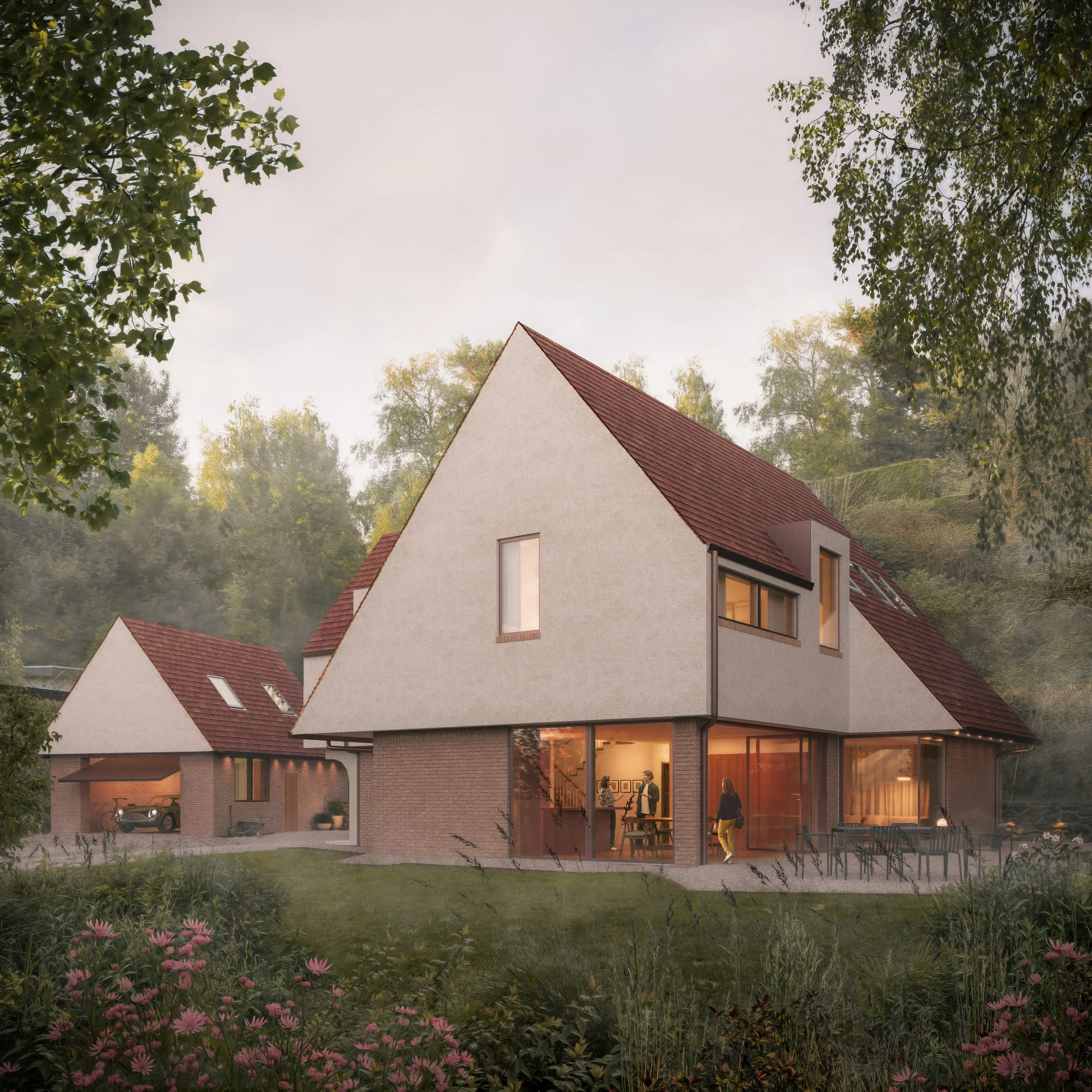How to Find Land to Build a House in the UK: A Guide for Self-Builders
For anyone dreaming of building their own home, finding land is the essential first step. Whether you're searching for a compact infill site in London or a scenic rural plot in the countryside, the journey begins with a question: Where can I find land to build a house in the UK?
At StudioFolk Architects, we regularly work with self-builders to help navigate this exciting but often complex process. In this blog post, we’ll explore how to find building land, what to look out for, and how working with an architect early on can make all the difference.
1. Where to Start Your Search for Land
There’s no single path to finding the perfect plot — but these approaches are a great place to start:
Speak to local estate agents and land agents – They often know of land coming to market before it's publicly listed.
Use specialist plot websites – Platforms like PlotBrowser, and Rightmove are designed for self-builders.
Attend land and property auctions – These can be a source of both bargains and unusual opportunities.
Build relationships with architects and planning consultants – We’re often made aware of off-market land before it becomes widely known.
You can also use the HM Land Registry for a small fee to access ownership records and contact landowners directly.
2. Where Can I Find Land in the UK?
Urban Locations
In built-up areas, opportunities often come in smaller, more complex parcels of land. Keep an eye out for:
Gaps between terraced houses.
Disused garages or service roads (known as backland plots).
Corner plots or underused gardens.
Former industrial or brownfield land.
Urban plots may be compact, but they offer exciting potential for unique, creative and sustainable design.
Rural Locations
In the countryside, land tends to be more generous, but planning constraints are usually more restrictive to those looking to build ‘new’ homes. Planning policy has recently shifted to support self-builders making it easier to convert existing buildings or structures into homes. Some examples of opportunities to look out for are:
Agricultural barns and farm buildings can now be converted into homes under Class Q permitted development rights.
Edge-of-settlement sites may be considered under certain local plans.
Barns and redundant commercial spaces may present opportunities with the right strategy.
There’s also growing demand for coastal plots in areas like Devon, Cornwall, Norfolk and Suffolk, where land offers a more affordable alternative to traditional homes.
A self-build home on a challenging coastal site in Devon, where we supported our client in securing planning approval for development on a former orchard.
3. What to Look For When Assessing a Plot
Not all land is created equal. Before making an offer, consider the following:
Key Factors:
Planning status – Buying land with full planning permission for residential use (Use Class C3) is often easier to finance and develop, but typically comes at a premium cost.
Access and services – Check if there's a legal right of access and whether utilities are nearby. Utility connections and access for fire services may increase costs and complexity of any building work.
Site constraints – Consider flood zones, tree protection orders (TPOs), site slope, or contamination.
Title and ownership – Ensure the title is clean and registered.
With or Without Planning Permission?
With planning permission: Faster start, easier financing, but higher cost.
Without planning: Lower cost, more risk, and more time to develop — but potential to tailor your design from the outset.
We would advise seeking guidance from an architect who can support with reviewing planning constraints and advising on site potential before committing to a purchase.
4. Finding Land for Sale in London
Building plots in London are rare, but not impossible to find. Opportunities to look for include:
Infill plots between buildings.
Garden plots or shared land.
Former garages or service yards.
Many London Boroughs maintain a Self-Build Register, where individuals can register their interest in land. Councils use these registers to shape housing policy and may occasionally release plots specifically for self-build homes.
5. How Can an Architect Help?
An architect’s input at the early stages can be invaluable. At StudioFolk, we regularly help clients:
Assess sites before purchase.
Navigate planning policies and identify constraints.
Explore design potential and development value.
Coordinate consultants and technical specialists.
Manage the process from concept to construction.
Working with an architect can reveal opportunities others might miss — and helps to avoid costly mistakes down the line.
FAQs
Where can I find land for a self-build in the UK?
Search online plot websites, contact local agents, or approach landowners directly. Look out for infill plots, barns, garden subdivisions, or redundant spaces.
Is it better to buy land with or without planning consent?
With planning: lower risk, higher cost. Without planning: higher risk, lower cost — but greater design flexibility. It depends on your timeline, budget, and confidence navigating planning.
How do I access a self-build register?
Search your local council’s website for “self-build register”. It’s free or low-cost to join and may give early access to future plots.
Can an architect help me find land?
Yes — architects often have early access to off-market plots and can assess whether land is worth pursuing. We also help with feasibility studies, planning applications, and design.
Ready to Begin Your Self-Build Journey?
If you're looking to build your own home and need guidance finding the right plot of land, we’d love to hear from you. At StudioFolk, we’re passionate about creating sustainable and enduring homes that respond to their site, context, and your vision.
Get in touch with us to book a consultation and start planning your dream home.

